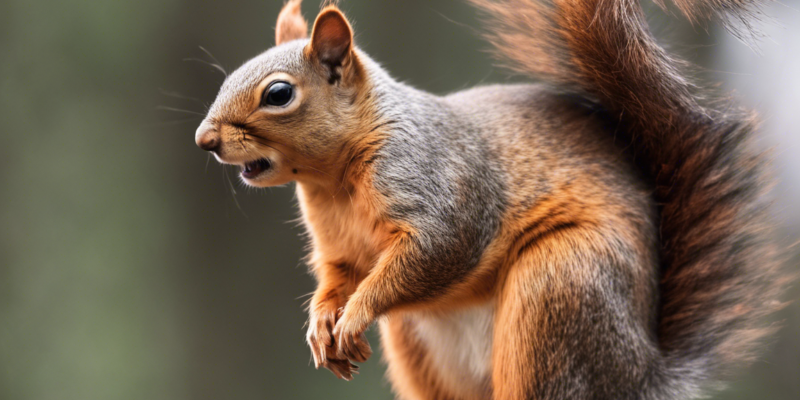Picture this: you’re outside enjoying a calm afternoon in your backyard when suddenly you hear squirrel chirping sounds. You look around, trying to locate the noisy critter, only to find a squirrel perched on a branch making high-pitched sounds. But what exactly do chirping squirrel sounds mean? Are they communicating something important, or is it just random noise? In this comprehensive guide, we’ll delve into the fascinating world of chirping squirrels to uncover the mysteries behind their vocalizations.
Understanding Squirrel Communication
Squirrels are highly vocal animals that use a variety of sounds to communicate with each other. These sounds can range from barks and chatters to growls and chirps. Chirping is one of the more distinctive sounds that squirrels make, and it serves several important purposes in their communication repertoire.
Types of Chirping Sounds
Chirping is a high-pitched vocalization that squirrels use in different contexts. Here are some common types of chirping sounds and their meanings:
- Alarm Calls: When a squirrel detects a potential threat in its surroundings, it may emit rapid chirping sounds to alert other squirrels in the area.
- Mating Calls: During the mating season, male squirrels may emit chirping sounds to attract females and establish their presence.
- Aggression: Squirrels may also chirp as a sign of aggression, especially when two squirrels are engaged in a territorial dispute.
Why Do Squirrels Chirp?
Now that we’ve covered the different types of chirping sounds squirrels make, let’s explore the reasons behind these vocalizations:
Warning Signals
One of the primary reasons squirrels chirp is to alert other squirrels of potential dangers. When they sense a predator or a threat nearby, they emit rapid chirping sounds to warn their fellow squirrels to stay vigilant and take cover.
Territory Defense
Squirrels are territorial animals that mark their territories and defend them from intruders. Chirping can be a way for squirrels to assert their dominance and ward off rival squirrels from their territory.
Social Interaction
In addition to conveying alarm signals and defending territories, chirping sounds can also play a role in social interactions among squirrels. Squirrels may chirp to establish dominance, communicate mating intentions, or simply interact with other members of their group.
Interpreting Chirping Squirrel Sounds
While chirping is a common behavior among squirrels, interpreting the exact meaning of these sounds can be challenging. Each chirp may carry different nuances and context-dependent meanings, making it important to consider the specific situation in which the sound is produced.
Frequency and Intensity
The frequency and intensity of chirping sounds can provide clues about the squirrel’s emotional state and the urgency of the message being communicated. Rapid and high-pitched chirps may indicate a heightened sense of alertness or distress, while softer and slower chirping could signal a more relaxed or contented state.
Body Language
In addition to vocalizations, squirrels also use body language to convey information to each other. Observing the squirrel’s posture, tail movements, and interactions with other squirrels can help provide context for the chirping sounds being produced.
FAQs About Chirping Squirrels
Q: Are all squirrels capable of chirping?
A: Yes, most squirrel species are capable of producing chirping sounds, although the frequency and context of these vocalizations may vary.
Q: Do baby squirrels chirp differently than adults?
A: Yes, baby squirrels may emit softer and more plaintive chirping sounds compared to adults, especially when seeking maternal care.
Q: Can squirrels chirp while foraging for food?
A: While chirping is more commonly associated with alarm calls and social interactions, squirrels may occasionally chirp while foraging if they detect potential threats or competition nearby.
Q: Do squirrels chirp at night?
A: Squirrels are diurnal creatures, meaning they are most active during the day. While they may occasionally make sounds at night, chirping is more commonly heard during daylight hours.
Q: How can I distinguish between different types of squirrel vocalizations?
A: Paying attention to the pitch, duration, and context of the sounds can help you differentiate between chirps, barks, chatters, and other squirrel vocalizations.
In conclusion, chirping squirrel sounds play a crucial role in squirrel communication, helping these furry creatures convey important messages to each other. By understanding the context and meanings behind these vocalizations, we can gain valuable insights into the social dynamics and behaviors of squirrels in the wild. So, the next time you hear a squirrel chirping in your backyard, take a moment to appreciate the intricate language of these remarkable animals.


Comments